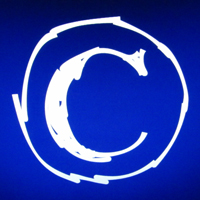- photo contests ▼
- photoshop contests ▼
- Tutorials ▼
- Social ▼Contact options
- Stats ▼Results and stats
- More ▼
- Help ▼Help and rules
- Login
1 - HDR Rendering for Photorealistic Imaging - 3DS-Max Tutorial

In this tutorial we explain what is the HDR rendering and how you can control the brightness of the final render using it, easily getting rich and outstanding pictures.
This tutorial answers the following questions:
- What is HDR?
- What does LDRI mean?
- How to post-process HDRIs using Photoshop?
- How to render HDRIs from V-Ray?
- Which image format is the best to save HDR renders?
- How to deal with ovebrights in the window and near it?
- How to lighten the dark rendering?
submitted: 5 years and 2429 days ago
2 - Speed up V-Ray rendering - 3DS-Max Tutorial

Hello, all V-Ray users!
This tutorial answers the following questions:
- What is adoptability of V-Ray and what are its advantages?
- What is the V-Ray DMC Sampler?
- How does the DMC Sampler work?
- What is the actual number of samples for blurry effects calculation in V-Ray?
- How to setup DMC Sampler?
- What is the difference between the noise threshold and adaptive amount parameters?
- What effects are influenced by global subdivs multiplier?
- How to control the quality of rendering in V-Ray?
- How to speed up V-Ray rendering?
- How to setup V-Ray draft render?
submitted: 5 years and 2788 days ago
3 - Best V-Ray settings - Indirect illumination - Photoshop Tutorial

Hello! We are pleased to share with you a new portion of 3d stuff. Continuing the theme of the correct configuration of V-Ray renderer, in this and the following three tutorials, we look into the second important part of V-Ray settings, the Indirect illumination.
To understand the setups of indirect illumination in V-Ray and any other render engine it is worth to find out what is indirect illumination, and why it is important to photo-realistic rendering.
submitted: 5 years and 2876 days ago
4 - Best Algorithms for Calculation of the Global Illumination in V-Ray - 3DS-Max Tutorial
5 - V-Ray Photon map and Light Cache Setups - 3DS-Max Tutorial

Hi everybody, who carefully read the previous two tutorials on GI theme and got to the third one! :)
In this tutorial, we will learn about the GI bounces rendering algorithms Photon mapping and Light Cache. Also, we’ll study in detail the working principle and each function of Light cache, as well as learn about the optimal values of its settings.
submitted: 5 years and 2951 days ago
6 - V-Ray Irradiance Map and Brute Force Setup - 3DS-Max Tutorial

Hello everyone! We continue to setting up the global illumination in V-Ray. In the previous tutorial on the general setups and the principles of Indirect Illumination, we have learned what the global illumination is and why is it needed. In this tutorial, we will look into the principles, parameters and arguments for and against the calculation algorithms of secondary GI bounces Brute Force and Irradiance Map.
submitted: 5 years and 2962 days ago
7 - Universal V-Ray settings - 3DS-Max Tutorial

In this tutorial, we will look into the one of the fundamental and, probably, the most controversial and frequently raised subjects in the 3d rendering. It is the rendering engine setup. We will setup the V-Ray renderer for 3ds Max.
What are the best universal settings for V-Ray interior rendering?
How to setup Vray for good exterior renderings?
What is the optimal settings combination for quality V-Ray product visualization?
How to make the basic start AA settings setup for Vray render?
submitted: 5 years and 3087 days ago








